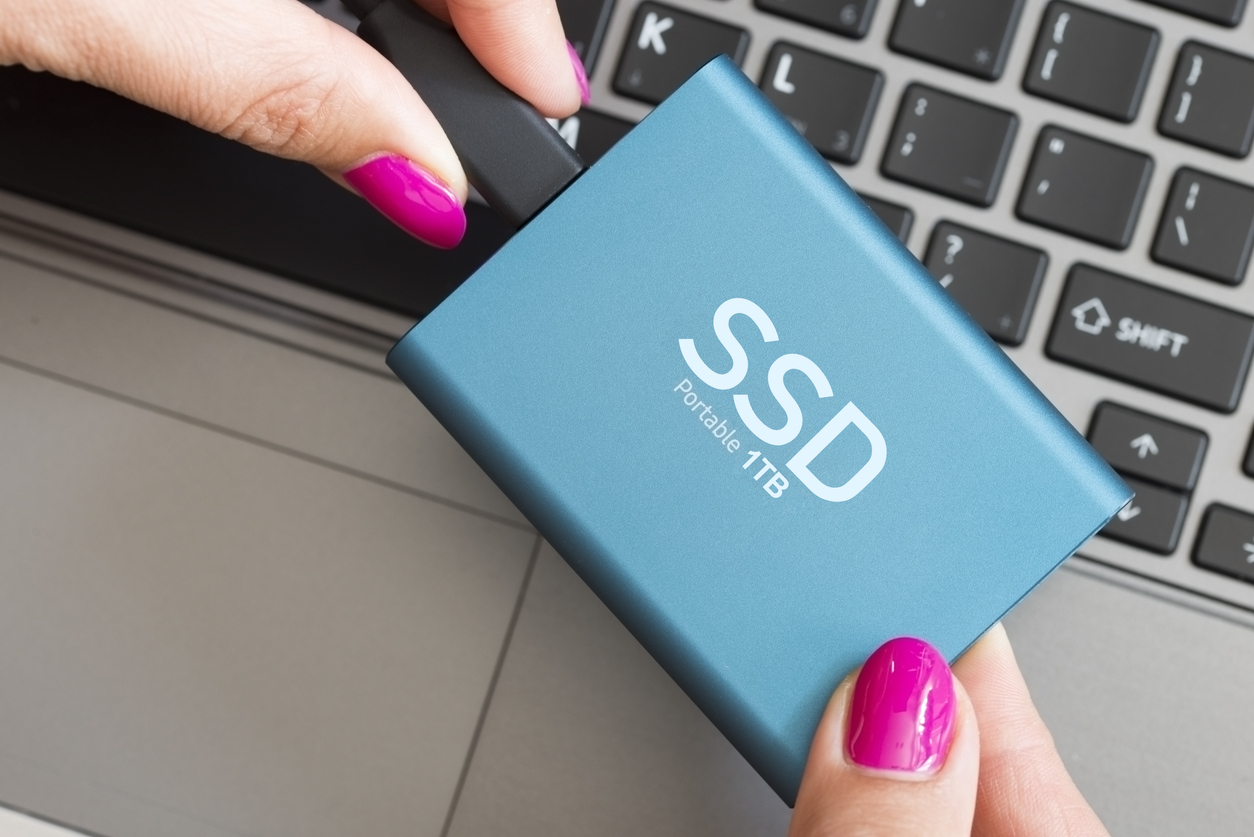
Let’s examine RAID, which is short for Redundant Array of Independent Disks. It’s a storage technique that distributes data across multiple drives within a single system. RAID comes in various configurations denoted by numbers like RAID 0, RAID 1, or RAID 5. Each configuration offers unique advantages, such as enhanced performance, increased fault tolerance, or a blend of both, depending on how it manages data distribution.
It’s important to note that while RAID enhances storage performance and resilience, it doesn’t substitute for data backup. Instead, RAID arrays distribute input/output operations across multiple disks to accelerate data reading and writing processes. They also duplicate data from one drive to others, ensuring uninterrupted system operation even if one fails.
HDD Raid vs. SSD Raid: A Brief History
Initially, HDD-based RAID enhanced performance by consolidating read and write operations across multiple drives. This approach allowed the operating system to perceive the HDDs as a single storage entity, facilitating aggregated I/O operations and simultaneous data transfers, consequently boosting throughput. However, traditional RAID setups involving SSDs are less common for performance enhancement due to the inherently superior speed of flash-based SSDs compared to HDDs. Instead, SSD-based RAID configurations are predominantly utilized by vendors to safeguard data integrity in the event of drive failures.
In recent years, certain vendors in the flash array market have introduced SSD RAID strategies that purportedly surpass conventional RAID methodologies, offering additional benefits such as mitigating performance degradation associated with specific RAID configurations. This innovation stems partly from the distinct failure patterns exhibited by HDDs and SSDs. While HDD failures typically result in losing the entire drive, SSDs may experience failures localized to specific sectors or components. Consequently, vendors have explored tailored RAID approaches to address these nuanced failure modes and bolster data protection mechanisms.
The evolving landscape of storage technologies and the increasing adoption of SSDs have prompted vendors to reconsider traditional RAID paradigms, acknowledging the need for adaptive strategies that align with the unique characteristics of solid-state storage. By tailoring RAID configurations to suit the performance and reliability requirements of SSDs, vendors aim to optimize data resilience while maximizing the benefits of flash-based storage solutions.
Which is Better?
What do you need to accomplish? SSDs excel in scenarios demanding swift data access and high-performance computing, making them the preferred choice for gaming, multimedia editing, and software development where speed is paramount. Their rapid read/write speeds significantly enhance overall system responsiveness and reduce loading times for applications and files.
Moreover, SSDs contribute to a quieter and more energy-efficient computing environment, which is particularly beneficial for users seeking more silent operation and prolonged battery life in laptops and portable devices. However, HDDs remain a practical choice for scenarios requiring large-scale solutions at a lower cost, such as archival storage, media libraries, or backup systems where immediate access speed is less critical. Additionally, the longer lifespan and potentially simpler data recovery processes associated with HDDs make them suitable for applications where data integrity and long-term reliability are paramount considerations.
Ultimately, the decision between an SSD and an HDD hinges on the user’s or organization’s specific requirements and priorities. While SSDs offer unparalleled speed and efficiency, HDDs continue to serve a vital role in providing cost-effective, high-capacity storage solutions for various computing needs. Raiding doesn’t change those facts but emphasizes them.
Glyph has been a pioneering company in the digital data storage industry for almost three decades, specializing in product design, assembly, and testing within the USA. Their external storage solutions are meticulously engineered to address the most rigorous and challenging workflows.





